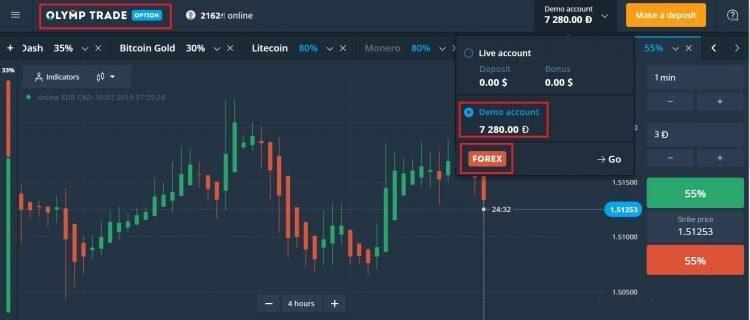
Certificates of deposit, or CDs, are fixed income investments that generally pay a set rate of interest over a fixed time period. Only donors or local laws determine whether funds are classified as restricted net assets. So, too, has been the treatment of funds that are not restricted but have board restrictions. Board restricted funds should be accounted for as board designated funds and reported under the unrestricted net assets caption in the financial statements. Not-for-profits will have clearer guidance on both of these issues with the new not-for-profit financial statement standard, which clarifies asset classes as assets with donor restrictions and assets without donor restrictions.
Withdrawals before maturity are usually subject to a substantial penalty. For a five-year CD, this is often the loss of up to twelve months’ interest. These penalties ensure that it is generally not in a holder’s best interest to withdraw the money before maturity—unless the holder has another investment with significantly higher return or has a serious need for the money. It is due to the fact that the probability of a specific bank or financial institution defaulting is larger than the probability of default for the U.S government.
What is the minimum deposit amount to open a Chase CD?
Brokered CDs also come with a variety of coupon payment frequencies. Your CD might be Callable or Call Protected, giving you the flexibility to choose a potentially higher rate now in exchange for the risk of the CD being called away from you. Alternatively you can choose Call Protection, which gives you more certainty of a rate of return over a defined period.
- At the outset, you take the amount of money that you want to invest in CDs and divide it by five.
- McBride is an attorney with a Juris Doctor from Case Western Reserve University and a Master of Science in accounting from the University of Connecticut.
- Once the rate of requests has dropped below the threshold for 10 minutes, the user may resume accessing content on SEC.gov.
- The top-paying CDs in the country typically pay five to eight times the national average rate, so doing your homework on the best options is a key determinant on how much you can earn.
A certificate of deposit (CD) is a time deposit sold by banks, thrift institutions, and credit unions in the United States. CDs typically differ from savings accounts in that the CD has a specific, fixed term before money can be withdrawn without penalty and generally higher interest rates. The bank expects the CD to be held until maturity, at which time they can be withdrawn and interest paid. Fixed rates are common, but some institutions offer CDs with various forms of variable rates. For example, in mid-2004, interest rates were expected to rise—and many banks and credit unions began to offer CDs with a “bump-up” feature.
How to List Certificates of Deposit on a Financial Statement
Take your learning and productivity to the next level with our Premium Templates. CFI is the official provider of the Commercial Banking & Credit Analyst (CBCA)™ certification program, designed to transform anyone into a world-class financial analyst. The amount that is agreed to be deposited in the CD is locked in when signed. There is no standard amount of principal, and for each CD, it can vary substantially.
Finally, you can also choose a CD that has a step-up coupon schedule. This coupon rate pays a fixed interest rate amount for a defined period and will then increase, at which point the CD will pay this new higher interest rate until it changes again so on through the maturity date. A CD (certificate of deposit) is a type of deposit account that’s payable at the end of a specified amount of time (referred to as the term). CDs generally pay a fixed rate of interest and can offer a higher interest rate than other types of deposit accounts, depending on the market.
However, large institutional investors and high net-worth individuals have much more bargaining power and can negotiate the terms more broadly with banks and financial institutions. Interest rate fluctuation
Like all fixed income securities, CD valuations and secondary market prices are susceptible to fluctuations in interest rates. If interest rates rise, the market price of outstanding CDs will generally decline, creating a potential loss should you decide to sell them in the secondary market. Since changes in interest rates will have the most impact on CDs with longer maturities, shorter-term CDs are generally less impacted by interest rate movements.
What Category of Elements of Financial Statements Do Retained Earnings Belong In?
(See § 210.4–08(e).) Additional paid-in capital and other additional capital may be combined with the stock caption to which they apply, if appropriate. Certificates of deposit are characterized by a lack of liquidity since they are locked in for a certain amount of time. The penalty makes it very unattractive to withdraw the funds early. Chase’s website and/or mobile terms, privacy and security policies don’t apply to the site or app you’re about to visit. Please review its terms, privacy and security policies to see how they apply to you. Chase isn’t responsible for (and doesn’t provide) any products, services or content at this third-party site or app, except for products and services that explicitly carry the Chase name.
All the while, you’ll be earning a better return while the funds are invested than if you had deposited them in a savings or money market account. CDs have become a more attractive option for savers who want to earn more than most savings, checking, or money market accounts will pay, but without taking on the risk or volatility of the market. Even buying one-month Treasury bills may yield higher rates than what a company may get on their savings account. Cash yields also allows a company to strategically hold low-risk investments for future use while still attempting to preserve purchasing power better than holding cash directly. Because of the uncertainty regarding client creditworthiness, outstanding account receivable balances are not cash equivalents even if the invoice is due or shortly to be due. Even if a debt is ready for collection, there is no guarantee the client will be able to pay.
NCDs generally offer a return for investors at a higher rate than Treasury bonds. New Issue vs Secondary CDs from Fidelity
Fidelity offers brokered CDs through two main venues—as new issue offerings and from the secondary market. Investors typically will see 50–100 new issue offerings and as many as 2,000 secondary offerings at any point in time. (a) State separately in the answers about cancelled checks balance sheet the amounts of (1) future policy benefits and losses, claims and loss expenses, (2) unearned premiums and. (5) State separately in a note the amount of any class of investments included in subcaption (f) if such amount exceeds ten percent of stockholders’ equity. Once you’ve chosen a term and made your deposit, your rate is fixed for the length of your term.
Accounting Procedures for Recording a CD Purchase
Fidelity offers investors brokered CDs, which are CDs issued by banks for the customers of brokerage firms. The CDs are usually issued in large denominations and the brokerage firm divides them into smaller denominations for resale to its customers. Because the deposits are obligations of the issuing bank, and not the brokerage firm, FDIC insurance applies.

Commonly, institutions mail a notice to the CD holder shortly before the CD matures requesting directions. The notice usually offers the choice of withdrawing the principal and accumulated interest or “rolling it over” (depositing it into a new CD). Generally, a “window” is allowed after maturity where the CD holder can cash in the CD without penalty. Most states don’t regulate the instruments in split-interest agreements, but it’s possible that some states require organizations to separate investments in split interest funds. In practice, most organizations commingle these donations in their investment pool until the death of the donor, even if the organizations segregate investments in split-interest agreements on their balance sheet. The notes to the financial statements should include the appropriate disclosures on the split interest agreements.
In this article, we’ll explain how CDs work and how you can make them work for you. A certificate of deposit, commonly called a CD, is a special savings account you can https://online-accounting.net/ open at most banks and credit unions. But unlike a regular savings account, CDs require you to lock your funds away for a specific period of time until a maturity date.
Interest Rates for Certificate of Deposit (CD)
For instance, having $25,000 ready for deposit will occasionally enable you to open a CD that is not available to others with lesser amounts. But many of the top 10 rates in each CD term can be achieved with modest investments of just $500 or $1,000. And the vast majority of top rates are available to anyone with at least $10,000. Or maybe you simply want some portion of your savings invested very conservatively, or you shun the risk and volatility of the stock and bond markets altogether. Though CDs don’t offer the growth potential of equity or debt investments, they also don’t carry a risk of downturns.
First Republic Bank Is Sold to JPMorgan: What to Know – The New York Times
First Republic Bank Is Sold to JPMorgan: What to Know.
Posted: Wed, 03 May 2023 07:00:00 GMT [source]
On the right side of the accounting equation the credit to interest of 57 increases the net income which increases the retained earnings and therefore the owners equity in the business. Compensation may factor into how and where products appear on our platform (and in what order). But since we generally make money when you find an offer you like and get, we try to show you offers we think are a good match for you. That’s why we provide features like your Approval Odds and savings estimates. In general, and similar to other fixed-interest investments, the economic value of a CD rises when market interest rates fall, and vice versa.
Featured CD account
Established by the Federal Open Market Committee (FOMC), which meets eight times per year to set a target interest rate, the federal funds rate has broad implications on the pricing of such financial products. While there are certain CD accounts with adjusting rates, most pay fixed interest which can provide a consistent, predictable source of income. However, the interest rate is higher because of the constraints placed on the funds deposited, i.e. that the funds will not be withdrawn for a set period of time.
See our calculator with a list of various banks’ CD early withdrawal penalties. For instance, some of the best CD rates you’ll see have unlikely terms such as 5 months, 17 months, or 21 months. It may be to stand out, or perhaps to match an anniversary that the bank is celebrating, or for any number of other reasons. But if you can be flexible in considering these odd-term CDs instead of the conventional term that you were planning, you can sometimes find yourself with a better-paying opportunity. Note that the range of CD rates across different institutions can vary widely. It’s a mistake to just open a CD at the bank where you already have a checking relationship without investigating how its rates compare with those that you can earn elsewhere.